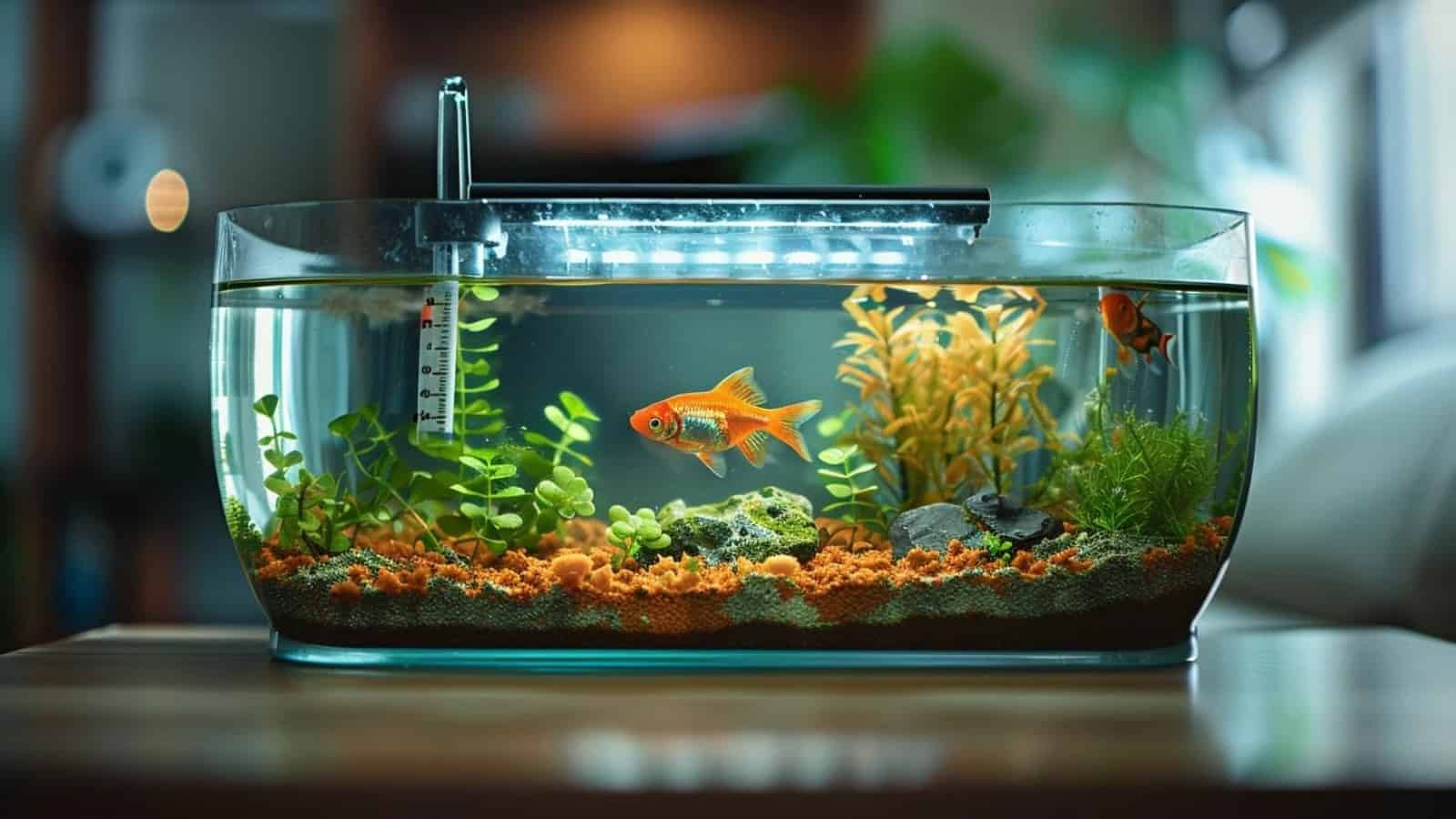When it comes to aquarium equipment, almost everyone knows that a reliable filter and lighting are essential, as is an aquarium heater for tropical fish tanks. But other aquarium accessories can be incredibly useful, too!
Here we’ll look at some of the most underrated bits of aquarium gear, and explain why you may wish you’d known about them sooner!
Aquarium Spray Bar
An aquarium spray bar might just be one of the most underrated pieces of aquarium kit. Most people who’ve tried one will agree, but for those who don’t know what it is, let us explain.
A spray bar is an accessory that you attach to your filter’s outlet to redistribute the aquarium water in a more even way. Rather than allowing the full force of the filter’s outlet to flow through the out pipe, the water is directed into a narrow tube with several holes, usually directed towards the water’s surface.
Broadcasting the filter current in this way has numerous advantages. Firstly, a normal filter current can be too strong for many types of fish. Species with long, flowing fins such as betta fish and fancy goldfish are especially prone to stress from strong currents, and many others, including cichlids and gouramis also prefer a gentle flow.
Another plus of the spray bar is that when the outlet holes are directed upwards, the current creates a lot of surface agitation, and therefore better gas exchange and higher oxygen levels. Since higher oxygen levels usually mean healthier fish, spray bars are a win-win!
Indian Almond Leaves

If you’ve ever seen an aquarium with rich amber-colored water and wondered how they did it, the answer is tannins. Tannins are organic compounds that stain the water and alter its chemistry. One very useful natural product that contains tannins is Indian almond leaves.
Indian almond leaves come from the Indian almond tree, Terminalia catappa. As a rich source of tannins, adding the leaves to your tank will give it a natural-looking amber glow. But it’s important to understand how the tannins will alter your water chemistry.
By making the water softer and more acidic, Indian almond leaves, can help to make conditions more suitable for fish like bettas, gouramis, and angelfish that prefer those water conditions. Not only that, but Indian almond leaves also possess antimicrobial qualities that many people believe can help prevent bacterial and fungal infections.
Just two bits of advice: Don’t add Indian almond leaves to tanks where the fish prefer hard, alkaline water, as it may make the water too acidic for them. Secondly, remember to remove your carbon filter if you’re using Indian almond leaves, otherwise, it’ll filter out the active ingredients that make them a great tonic.
Aquarium Equipment and Lead Screen

Nothing can spoil a gloriously arranged aquascape quite like aquarium accessories and wires in full view at the rear of the tank. For a totally natural look, they need to be hidden.
Fortunately, there are several ways to conceal aquarium heaters, filters, and leads so that your tank can retain a 100% authentic appearance. While some aquariums have built-in screens to keep aquarium gear out of sight, you can also make your own DIY versions at home.
Looking through aquarium forums, you’ll find plenty of ideas to disguise equipment and leads, ranging from mirrors, to painting the back of the tank black, to using purpose-made aquarium backing.
One of our favorite ways has to be the DIY moss wall method, where Java moss is sandwiched between layers of plastic mesh to create a living, natural-looking screen.
This could be placed just in front of the filter and heater, or even right along the back of the tank to conceal wires and other distracting objects on the other side of the glass.
Microfiber Cloth

While a microfiber cloth might not seem like the most exciting piece of aquarium gear out there, having one can make a world of difference in giving you a crystal-clear viewing experience.
Because water splashes, dust, and fingerprints will all inevitably stain the outer aquarium glass, it can be easy to get complacent and get used to staring at your fish through a cloudy screen. It’s only when you give your glass a good clean that you realize how much difference a clear view can make.
Keeping a decent microfiber cloth by your tank at all times is a great way to make sure that your glass remains spotlessly clean at all times. Microfiber is superior to many other materials in its cleaning efficiency, and it is also less likely to scratch the glass.
Water Testing Kit

I wouldn’t normally consider a water testing kit as a ‘random’ piece of aquarium kit, but rather as an essential item for all tanks. We’ve been amazed, however, at the number of aquarists who don’t bother to keep one.
Testing your water is important for many reasons. Firstly, you need to know the pH of your water to understand which fish you can keep. For example, South American fish prefer acidic water, while East African fish need alkaline water to thrive.
Secondly, testing your water regularly allows you to monitor ammonia, nitrite, and nitrate levels, which can become extremely dangerous if they get out of hand. Mastering your water chemistry is one of the skills that will turn you from a novice aquarist into a pro.
There are many water testing kit options on the market. For beginners, simple test strips are sufficient, but many professionals still prefer liquid test kits, especially those that measure a larger range of parameters.
Thermometer

As with aquarium test kits, an aquarium thermometer is an essential item for any tropical aquarium in our book.
While aquarium heaters are usually quite reliable, it’s important not to depend on the heater’s thermostat alone. If heaters break or malfunction, water temperatures can quickly swing outside of your fish’s preferred range, leaving them vulnerable to thermal shock.
To prevent this potentially fatal scenario, a reliable aquarium thermometer should be placed permanently in an easy-to-read location and checked at least once a day to ensure the correct temperature.
Aquascaping Kit

Many people have never heard of aquascaping kits, but once you get one, you might wish you had gotten it sooner.
Typically consisting of long-handled tweezers, a long-handled pair of scissors, and a glass scraper, the items allow you to move plants around, prune them, and clean the interior glass from algae – all in one kit.
Because plants can grow fast and multiply themselves quickly, having tools to prune them and relocate them efficiently can be incredibly useful. Likewise, having an effective algae scraper can make your life a lot easier when cleaning the interior glass.
Good aquascaping kits are usually made from stainless steel so that they don’t blemish, and are remarkably affordable.



